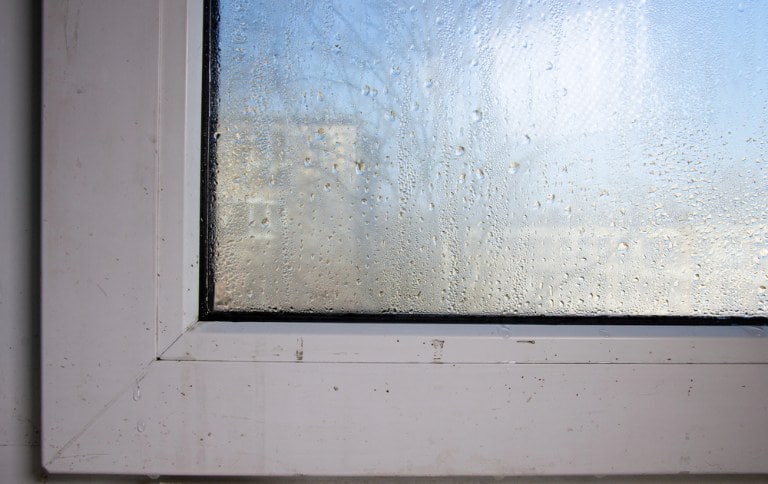Why Fogged Glass Panels Appear Overnight Without Physical Impact

There’s a peculiar moment many homeowners and building occupants encounter: waking up to find a once-clear window pane now inexplicably clouded. This isn’t the familiar condensation on the exterior that wipes away with a cloth, but a stubborn, internal fog that obstructs the view and seems to have appeared overnight.
It’s a puzzling phenomenon, especially when there’s no evidence of impact or obvious damage to the glass, leaving many to wonder if they need emergency glass repair despite the lack of a visible cause. This silent visual impairment can evoke a sense of mystery, making one wonder about the hidden forces at play within something as seemingly simple as a window.
Understanding why this internal fogging occurs requires a look beyond the visible surface, delving into the intricate design of modern windows and the subtle ways environmental factors can undermine their integrity. This article explores the unseen reasons behind those frustratingly opaque glass panels.
The Anatomy of Insulated Glass Units (IGUs): A Sealed World
Modern windows, especially those designed for energy efficiency, are rarely just a single pane of glass. They are typically Insulated Glass Units (IGUs), meticulously engineered systems composed of two or more panes of glass separated by a sealed space.
This space, often filled with inert gases like argon or krypton, acts as an insulating barrier, significantly reducing heat transfer between indoors and outdoors. The panes are held apart by a spacer bar, usually made of metal or a structural foam, which also contains a crucial element: a desiccant.
This desiccant, much like the small packets found in new shoes, absorbs any residual moisture trapped within the IGU during manufacturing, ensuring the cavity remains perfectly dry. This sealed environment is the key to an IGU’s thermal performance and visual clarity, keeping condensation at bay.
The Silent Culprit: Compromised Seals and Moisture Infiltration
The appearance of fog within an IGU is a clear indicator that the integrity of its sealed environment has been compromised. The hermetic seal, which runs along the perimeter of the glass unit, is the primary defense against external moisture and air.
Over time, or due to various stressors, this seal can degrade, developing microscopic cracks or breaches. Once breached, humid air from the exterior is slowly drawn into the insulated cavity. As temperatures fluctuate, particularly during cooler nights, this moist air reaches its dew point, causing the water vapor to condense into visible droplets or a cloudy film on the inner surfaces of the glass panes.
This internal condensation is precisely what constitutes a “foggy window,” and addressing it typically necessitates foggy window repair or replacement to restore the unit’s clarity and insulating properties.
Environmental Stressors: The External Pressures
While a compromised seal is the direct cause of internal fogging, environmental factors play a significant role in its degradation. Windows are constantly exposed to the elements, enduring a variety of stressors that attack the integrity of the insulated glass unit (IGU).
The primary environmental culprits include:
- Thermal Cycling: The expansion and contraction caused by daily and seasonal temperature swings.
- UV Radiation: Direct sunlight degrades the chemical compounds in the sealant over time.
- High Humidity: Persistent moisture in the air that seeks to find a way past the seals.
- Atmospheric Pressure Changes: Shifts in barometric pressure that exert force on the entire unit.
- Wind Load: The physical pressure exerted by strong winds causes the glass to flex and stress the seals.
- Direct Water Exposure: Rain, snow, and ice that directly assault the sealant materials.
Extreme temperature fluctuations cause the glass panes and the spacer materials to expand and contract at different rates. This constant movement puts immense stress on the sealant materials, gradually weakening their bond. High humidity levels increase the amount of moisture vapor available to challenge the seal, while sudden atmospheric pressure changes can also exert pressure differentials on the IGU.
Over the years, this relentless assault from nature wears down even the most robust seals, leading to the microscopic breaches that eventually allow moisture to infiltrate and cause the tell-tale internal condensation, even without any direct physical impact.
Latent Flaws: Manufacturing and Installation Vulnerabilities
Beyond the environmental assault, subtle imperfections inherent from the manufacturing process or overlooked during installation can significantly shorten an IGU’s lifespan. Even with rigorous quality control, microscopic defects in the sealant application, tiny air bubbles trapped within the seal, or minuscule inconsistencies in the spacer material can create latent vulnerabilities.
These flaws may not be immediately apparent, but become critical weak points under the continuous stress of daily temperature changes and atmospheric pressures. Similarly, improper installation techniques, such as failing to ensure proper drainage around the window frame or subjecting the unit to undue torque during placement, can introduce stresses that compromise the seal prematurely.
When a homeowner notices unexpected fogging, local professionals performing window repair in chicago often identify these hidden, pre-existing conditions as the root cause, leading to seal failure years after the initial installation.
Addressing the Issue: Solutions and Considerations
A fogged window is more than just an aesthetic annoyance; it signals a fundamental compromise in the window’s performance. The loss of insulating gas means significantly reduced thermal efficiency, leading to higher energy bills as heating and cooling escape or infiltrate through the impaired unit.
For some, immediate clarity might be critical, perhaps in a storefront where visibility is paramount, making emergency glass repair a necessity. When confronting a fogged IGU, several options are available.
| Solutions | Considerations |
| Replace the Insulated Glass Unit (IGU) | This is the most effective and durable solution. It fully restores the window’s original energy efficiency and visual clarity. While the initial cost is higher, it is a permanent fix. |
| Attempt a Defogging Process | A less expensive, more cosmetic fix. This involves drilling holes, cleaning the interior, and installing a one-way valve. It clears the fog but does not restore the insulating gas, so energy efficiency remains compromised. The seal can fail again. |
The choice often depends on the severity of the fogging, the age of the window, and budget considerations. While defogging can offer a temporary cosmetic fix, replacing the IGU is typically the more durable solution to restore the window’s original energy efficiency and visual clarity.
Conclusion
The sudden appearance of fog within a double-pane window, seemingly overnight and without physical impact, can be a perplexing occurrence for many. Yet, as we’ve explored, this phenomenon is not a mystery but a clear symptom of a compromised insulated glass unit. It stems from the failure of the hermetic seal, a critical component that maintains the dry, inert gas-filled cavity between the panes.
This breakdown is typically the cumulative result of relentless environmental stressors like temperature fluctuations and humidity, often exacerbated by subtle, pre-existing flaws from manufacturing or installation. Understanding these underlying causes is vital for homeowners and property managers.
Addressing the issue promptly not only restores the visual clarity of the glass but also, more importantly, reinstates the window’s crucial role in energy efficiency and indoor comfort. Ultimately, preserving the integrity of these essential barriers is key to maintaining both the aesthetic appeal and the functional performance of any structure.




